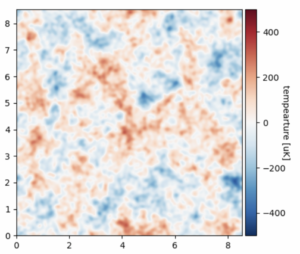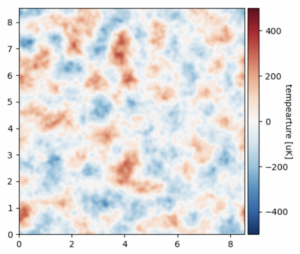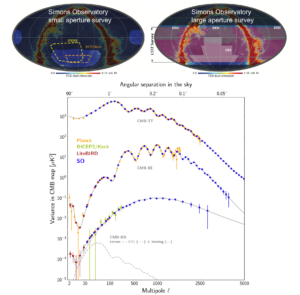The Cosmic Microwave Background (CMB) is the remnant of the first light that could ever travel freely throughout the universe. This light is in the microwave part of the electromagnetic spectrum that was emitted from the most distant parts of the universe that we can see. It consists of the blackbody photons produced by the early universe and the density fluctuations of this hot, dense early universe can be seen within it.
The Code for Anisotropies in the Microwave Background (CAMB) is an application that computes cosmic microwave background spectra given a set of input cosmological parameters. Parameters such as baryon density, the Hubble Constant, and CMB temperature can be changed to see how it would affect the CMB map as we know it today.
Using CAMB, the following plots could be created with the leftmost having the same baryon density as our current universe (0.0226), while the one on the right has a baryon density of 0.1.


More on the CMB and how it would change with different cosmological constants can be found in this PowerPoint.
To constrain these cosmological parameters, there have been a large number of experiments that have sought to map and measure the CMB via its spectrum, intensity, polarization, or otherwise. Recent experiments have taken a particular interest in the CMB’s B-mode polarization, which would be directly sensitive to primordial gravitational waves. They also seek to place even stronger constraints on the cosmological parameters than has been achieved so far.
Simons Observatory (SO) is one such endeavor. Located in the Atacama Desert of northern Chile, SO seeks to build on the work of the Atacama Cosmology Telescope (ACT) by constructing additional telescopes: 3 small aperture telescopes and 1 large aperture telescope. The small aperture telescopes have already begun taking preliminary data while the large aperture telescope awaits final construction steps. Additional telescopes funded by collaborators in France and Japan are also under development.

UW is an SO collaboration member institution, and our group seeks to use SO’s incoming data to better understand the Universe’s trajectory from its very beginning to the present day. By cross-correlating the CMB with other observables, like line intensity maps, one can hopefully learn more about the matter distribution in the universe during periods traditional galaxy surveys struggle to observe.